Abstract
Wiesmeyer, Herbert (Vanderbilt University, Nashville, Tenn.). Prophage repression as a model for the study of gene regulation. I. Titration of the λ repressor. J. Bacteriol. 91:89–94. 1966.—The concentration of λ repressor molecules within a λ lysogenic cell was estimated from the multiplicity of superinfecting homologous phage necessary to permit replication and release of plaque-forming units. A multiplicity of 20 superinfecting phage was found sufficient to permit replication to occur in the normal λ lysogen. The phage released after lysis of the superinfected lysogen was composed of both prophage and superinfecting phage types. Superinfection of the lysogen at lower multiplicities resulted in the lysis of only a small percentage of infected cells and is thought to represent a possible heterogeneity of repressor concentration in the lysogenic population. Viability of the superinfecting particle was found to be unnecessary for titration of the repressor. The repressor concentration in three lysogens of the nonultraviolet-inducible mutant of λ, λind−, was found to be greater than 20 regardless of the host bacterium. However, the number of cells yielding phage after superinfection was found to vary with the particular host. The specificity of the λ repressor was shown to be limited to homologous phage, as determined following heterologous superinfection experiments with phages T6r, 82c, 434c, 434hy, and 424. In all instances except that of superinfection with phage 434hy, only heterologous phage replication occurred. Superinfection by phage 434hy resulted in the release of both prophage and superinfecting phage types. The latter type represented approximately 80% of the total phage released.
Full text
PDF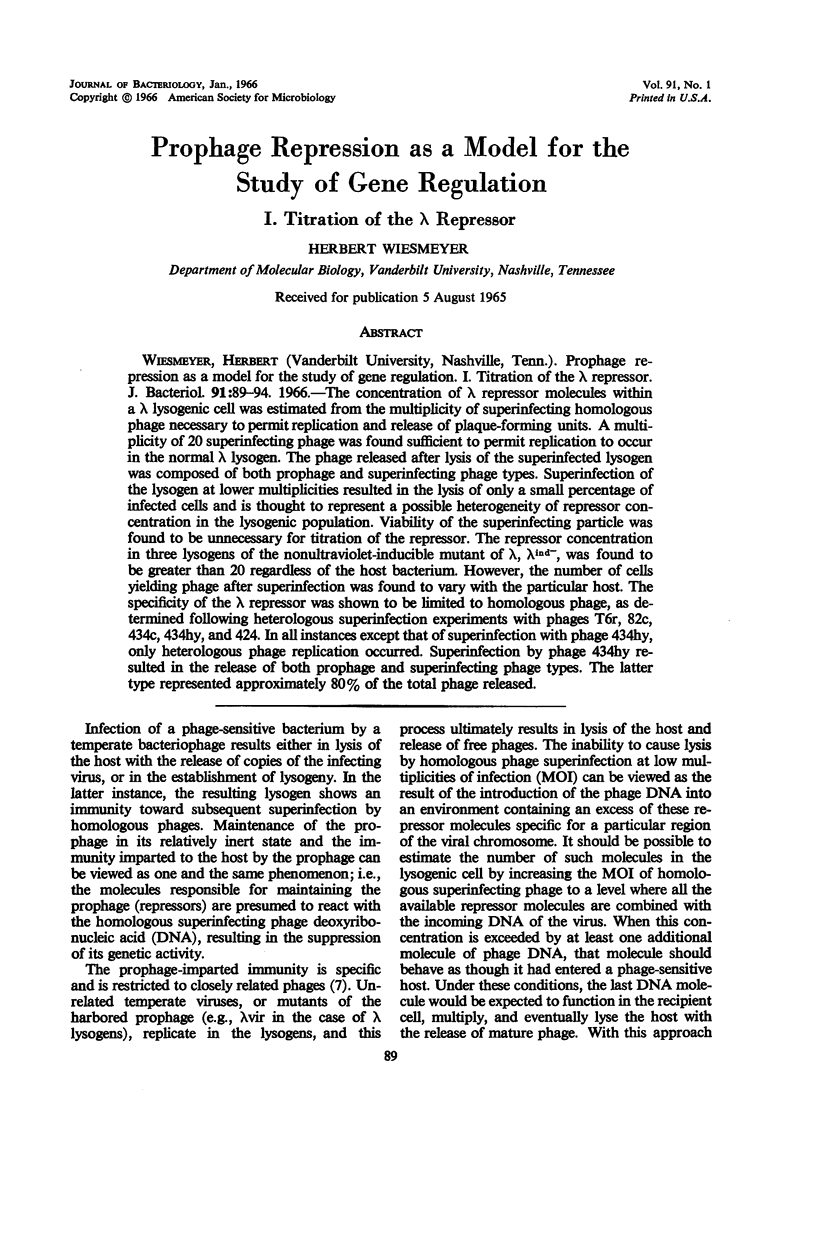
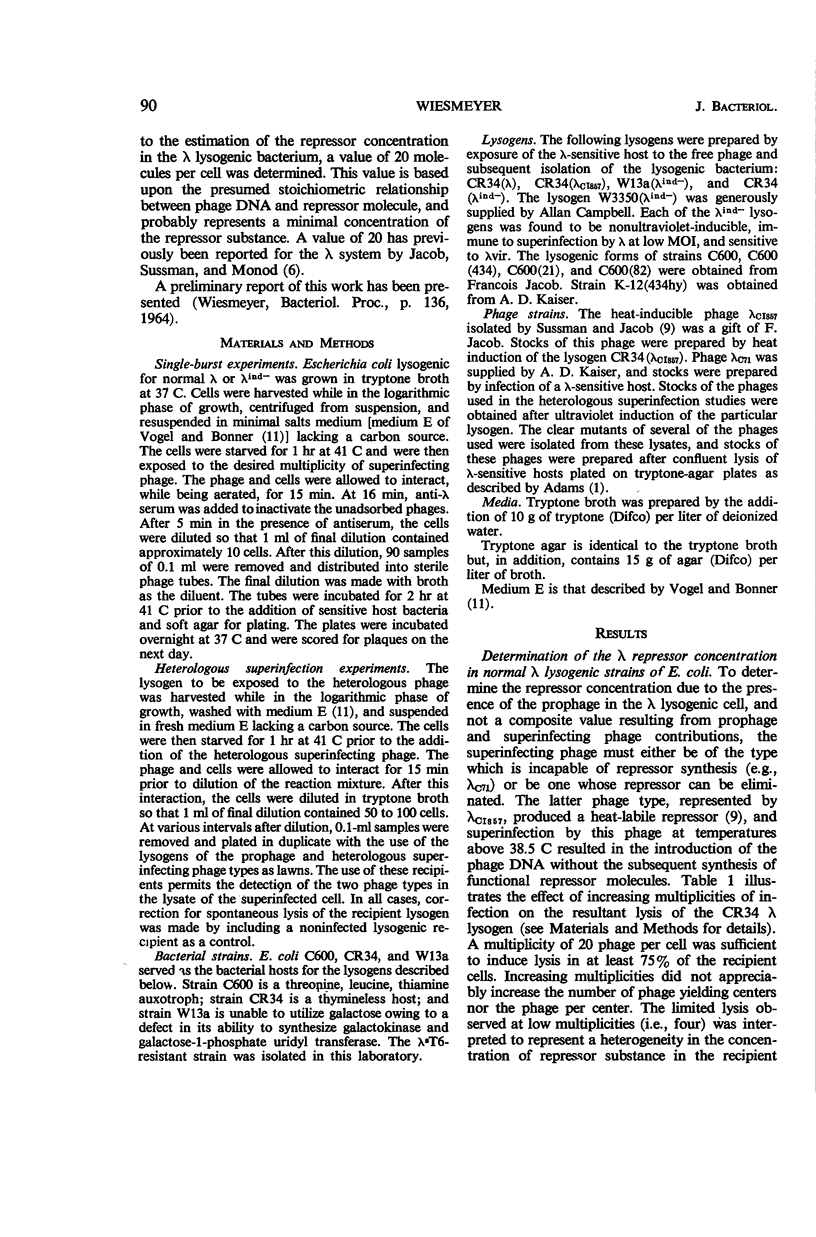
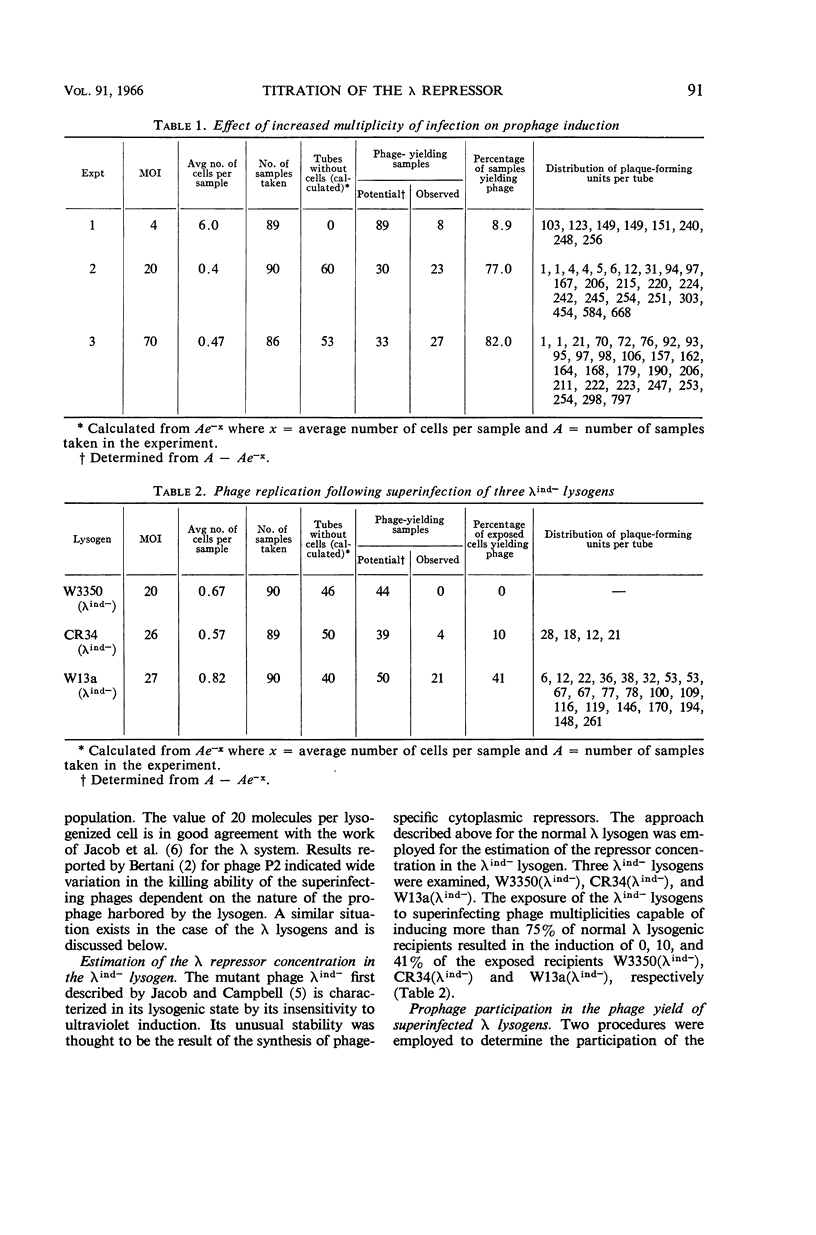
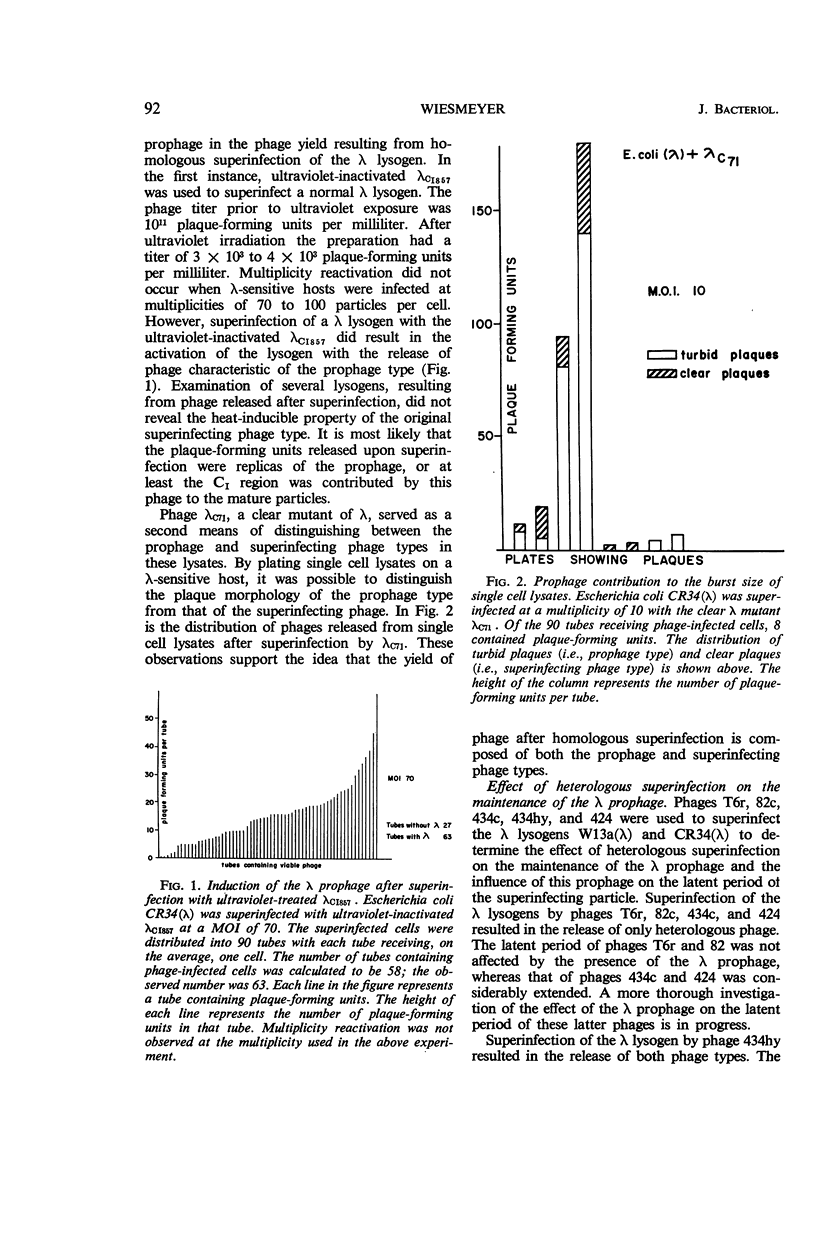
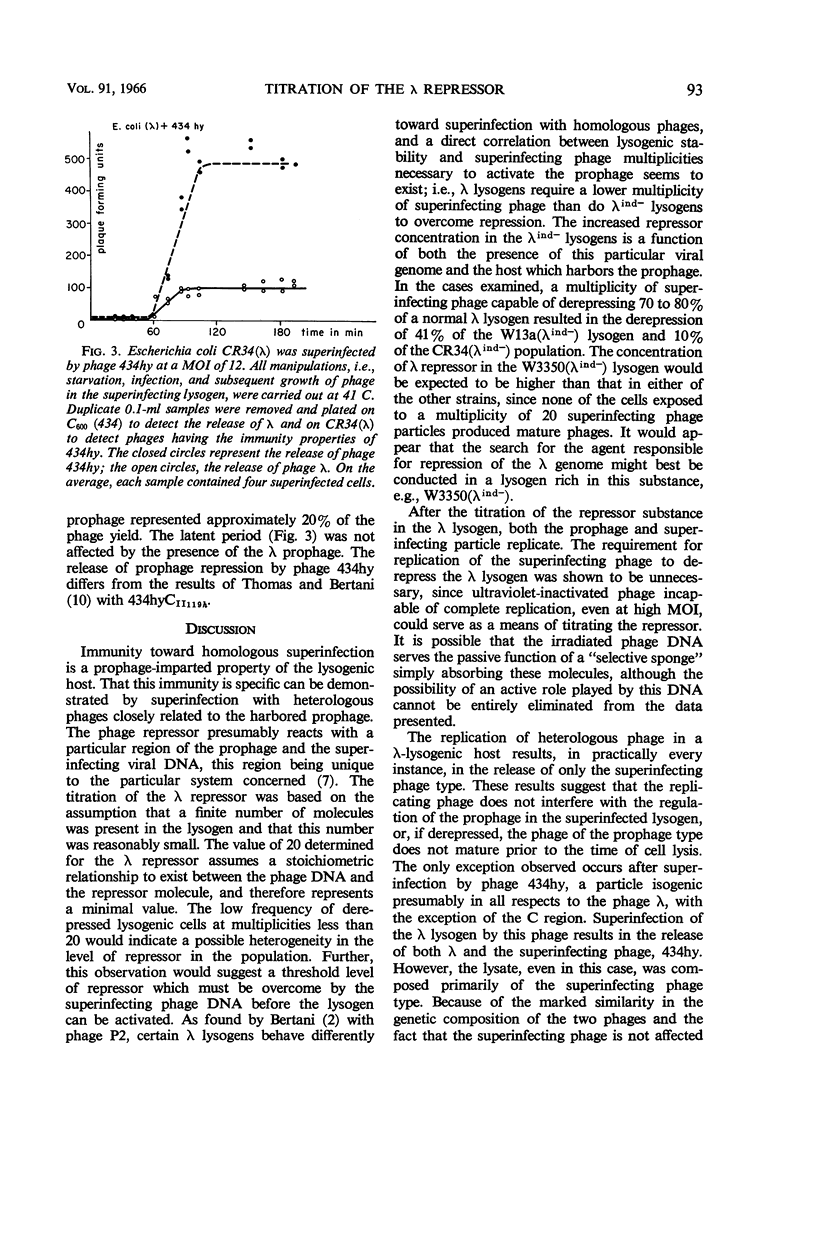
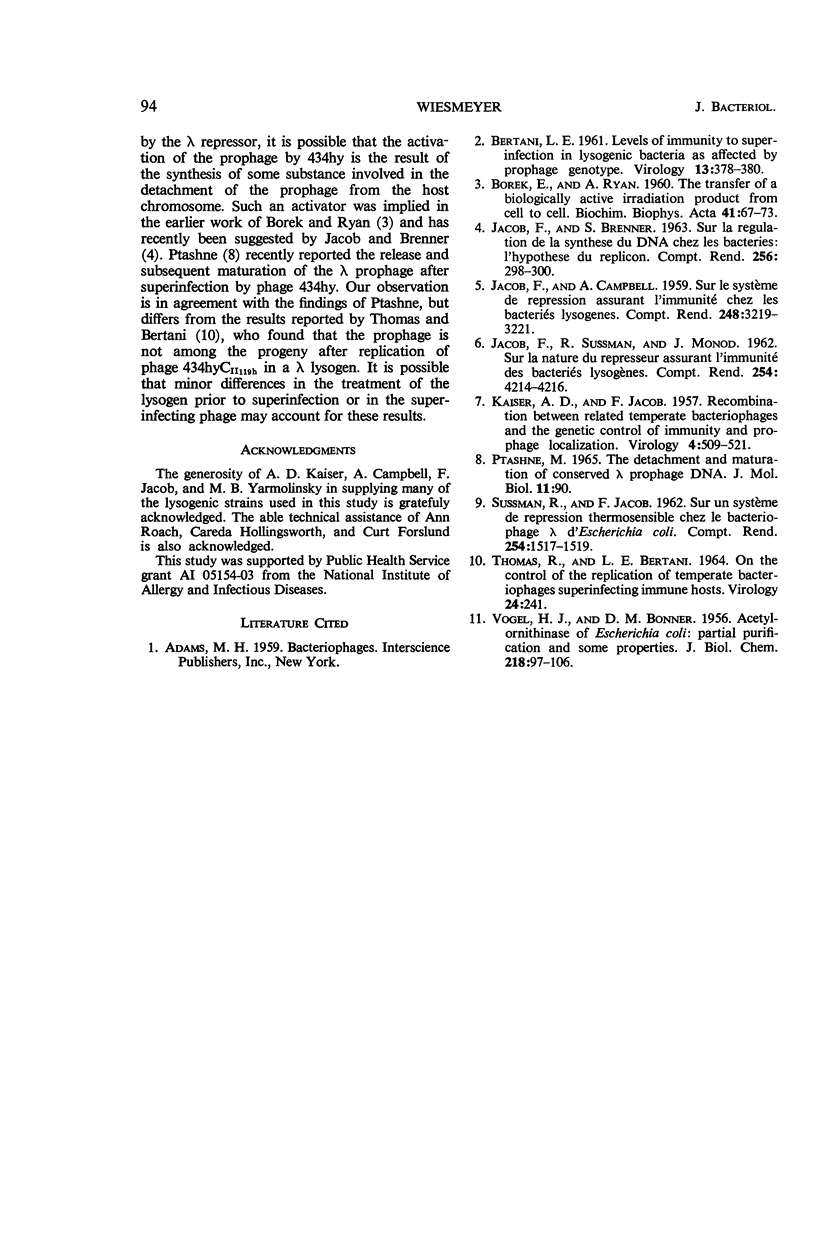
Selected References
These references are in PubMed. This may not be the complete list of references from this article.
- BOREK E., RYAN A. The transfer of a biologically active irradiation product from cell to cell. Biochim Biophys Acta. 1960 Jun 17;41:67–73. doi: 10.1016/0006-3002(60)90369-3. [DOI] [PubMed] [Google Scholar]
- JACOB F., BRENNER S. [On the regulation of DNA synthesis in bacteria: the hypothesis of the replicon]. C R Hebd Seances Acad Sci. 1963 Jan 2;256:298–300. [PubMed] [Google Scholar]
- JACOB F., CAMPBELL A. Sur le système de répression assurant l'immunité chez les bactéries lysogenes. C R Hebd Seances Acad Sci. 1959 Jun 1;248(22):3219–3221. [PubMed] [Google Scholar]
- JACOB F., SUSSMAN R., MONOD J. [On the nature of the repressor ensuring the immunity of lysogenic bacteria]. C R Hebd Seances Acad Sci. 1962 Jun 13;254:4214–4216. [PubMed] [Google Scholar]
- KAISER A. D., JACOB F. Recombination between related temperate bacteriophages and the genetic control of immunity and prophage localization. Virology. 1957 Dec;4(3):509–521. doi: 10.1016/0042-6822(57)90083-1. [DOI] [PubMed] [Google Scholar]
- PTASHNE M. THE DETACHMENT AND MATURATION OF CONSERVED LAMBDA PROPHAGE DNA. J Mol Biol. 1965 Jan;11:90–96. doi: 10.1016/s0022-2836(65)80174-7. [DOI] [PubMed] [Google Scholar]
- SUSSMAN R., JACOB F. [On a thermosensitive repression system in the Escherichia coli lambda bacteriophage]. C R Hebd Seances Acad Sci. 1962 Feb 19;254:1517–1519. [PubMed] [Google Scholar]
- THOMAS R., BERTANI L. E. ON THE CONTROL OF THE REPLICATION OF TEMPERATE BACTERIOPHAGES SUPERINFECTING IMMUNE HOSTS. Virology. 1964 Nov;24:241–253. doi: 10.1016/0042-6822(64)90163-1. [DOI] [PubMed] [Google Scholar]
- VOGEL H. J., BONNER D. M. Acetylornithinase of Escherichia coli: partial purification and some properties. J Biol Chem. 1956 Jan;218(1):97–106. [PubMed] [Google Scholar]


